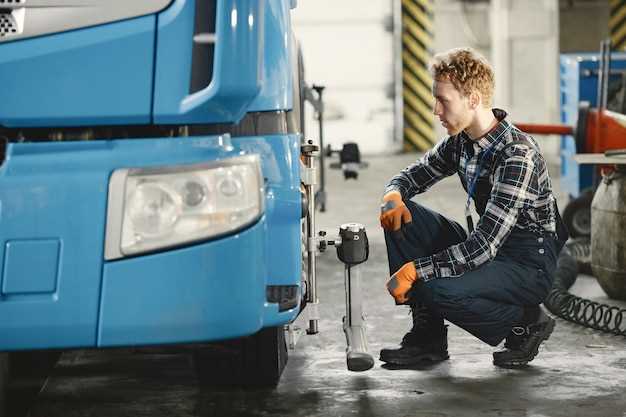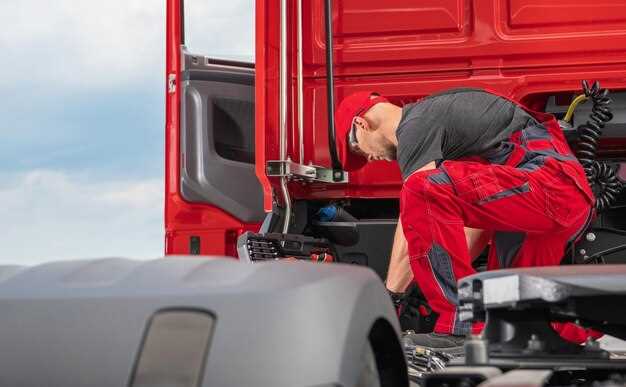
Air brake systems are essential components in large trucks, providing the necessary stopping power for hefty loads. Unlike traditional hydraulic brakes, air brakes utilize compressed air to operate, allowing for more efficient and effective braking in large vehicles. These systems are not only critical for performance but also play a vital role in ensuring the safety of the driver, cargo, and other road users.
A comprehensive grasp of air brake systems requires an understanding of their design and functionality. The core elements include the air compressor, air tanks, and the brake chambers, each contributing to the overall effectiveness of the system. Properly functioning air brakes ensure that large trucks can slow down or come to a complete stop safely, even under challenging conditions.
Moreover, regular maintenance and inspections of air brake systems are crucial for long-term reliability and performance. Neglecting these critical systems can lead to brake failure, compromising the safety of the vehicle. Therefore, truck operators and owners must prioritize the upkeep of their air brake systems to ensure compliant and safe operations on the road.
Components of Air Brake Systems and Their Functions

The air brake system in large trucks is a sophisticated assembly designed to provide reliable stopping power and enhance safety. Key components include:
Compressor: The air compressor is vital for generating compressed air, which powers the entire braking system. It ensures that air pressure is maintained within optimal levels for effective brake operation.
Air Reservoirs: These tanks store compressed air until it is needed for braking. They act as a buffer, ensuring that there is sufficient air available for quick and responsive brake actuation.
Brake Valves: These components, such as the foot valve and relay valve, regulate the flow of air to the brake chambers. They enable precise control over brake application and release, providing smooth and responsive braking action.
Brake Chambers: Pneumatic brake chambers convert the air pressure into mechanical force, which engages the brakes. When air enters the chamber, it pushes a diaphragm or piston, thereby activating the brake shoes against the drum or disc.
Slack Adjusters: These devices automatically adjust the brake shoes’ position as they wear down, ensuring that there is always sufficient contact with the drums or discs. This mechanism maintains brake effectiveness and enhances safety.
Anti-lock Braking System (ABS): ABS prevents wheel lock-up during hard braking, which can lead to loss of control. By modulating the air pressure applied to each brake, it enhances stability and safety, particularly in slippery conditions.
Brake Lines: These are the conduits through which compressed air travels to various components of the system. The integrity of the brake lines is crucial for maintaining pressure and ensuring the reliability of the brakes.
Each of these components plays a critical role in the performance of air brake systems. Understanding their functions helps in appreciating the complexity and importance of maintaining these safety systems in large trucks.
Common Issues with Air Brakes and How to Troubleshoot Them
Air brake systems are crucial for the safety and efficiency of large trucks. However, like any complex system, they can encounter various issues. Understanding these problems and knowing how to troubleshoot them is essential for maintaining optimal performance.
1. Air Leakages: One of the most common issues is air leaks. These can occur at connections, hoses, or fittings. To troubleshoot, start by visually inspecting the entire system for any signs of wear or damage. Use soapy water to check for leaks; bubbles will form at the site of any escaping air. Once identified, repair or replace the faulty components immediately to ensure system integrity.
2. Insufficient Air Pressure: If the air pressure gauge reads lower than normal, this can lead to inadequate braking performance. Check the air compressor and the governor for proper operation. Ensure that the air tanks are not blocked and are draining correctly. Regular maintenance of these components is vital to avoid pressure drops.
3. Brake Chamber Malfunctions: Brake chambers can fail due to rust, corrosion, or mechanical damage. A malfunctioning brake chamber may not apply pressure effectively, compromising safety. Inspect each chamber for signs of damage, and ensure the pushrod travel is within specifications. Replace any chambers that show signs of wear or failure.
4. Contaminated Air Supply: Oil or moisture in the air supply can cause brake malfunction. To troubleshoot, check the air dryer for proper functioning. Replace filters regularly and maintain the air dryer to ensure clean and dry air is supplied to the braking system.
5. Poor Brake Performance: If the brakes are not responding as expected, inspect the brake pads and drums for wear. Additionally, examine the slack adjusters to ensure they are functioning correctly. Timely adjustment and replacement of worn-out parts can significantly enhance braking efficiency.
Regular inspection and maintenance of air brake systems are imperative for safe operation. By understanding common issues and following these troubleshooting steps, drivers and fleet operators can ensure the reliability and safety of their braking systems.
Safety Protocols for Inspecting and Maintaining Air Brake Systems

Ensuring the safety and reliability of air brake systems in large trucks requires strict adherence to inspection and maintenance protocols. Proper procedures not only enhance the performance of these systems but also protect drivers, passengers, and other road users. The following guidelines should be followed meticulously:
- Pre-Inspection Safety Checks
- Ensure the vehicle is parked on a level surface and the parking brake is engaged.
- Use appropriate personal protective equipment (PPE) such as gloves and safety glasses.
- Conduct a visual inspection for any obvious leaks, damages, or worn components.
- Air System Pressure Checks
- Verify that the air pressure gauge indicates the appropriate level for safe operation.
- Inspect air tanks for corrosion and ensure drain valves are functioning to remove contaminants.
- Test the integrity of air lines by looking for cracks or wear that may affect system performance.
- Brake Component Inspection
- Examine brake pads and shoes for wear and replace if necessary to maintain efficient braking.
- Check brake chambers and diaphragms for proper operation and leaks.
- Inspect the slack adjusters to ensure they are correctly set and functioning within specifications.
- Routine Maintenance Schedule
- Establish a regular maintenance schedule based on manufacturer recommendations and usage patterns.
- Document all inspections and repairs to maintain an accurate service history.
- Train personnel on the latest safety protocols and best practices in air brake maintenance.
- Emergency Preparedness
- Understand emergency procedures in the event of a brake failure or system malfunction.
- Equip vehicles with necessary tools and parts for quick roadside repairs.
- Review and practice emergency stopping techniques regularly with drivers.
By consistently following these safety protocols, operators can ensure their air brake systems remain efficient and reliable, significantly reducing the risk of accidents caused by brake failure.




